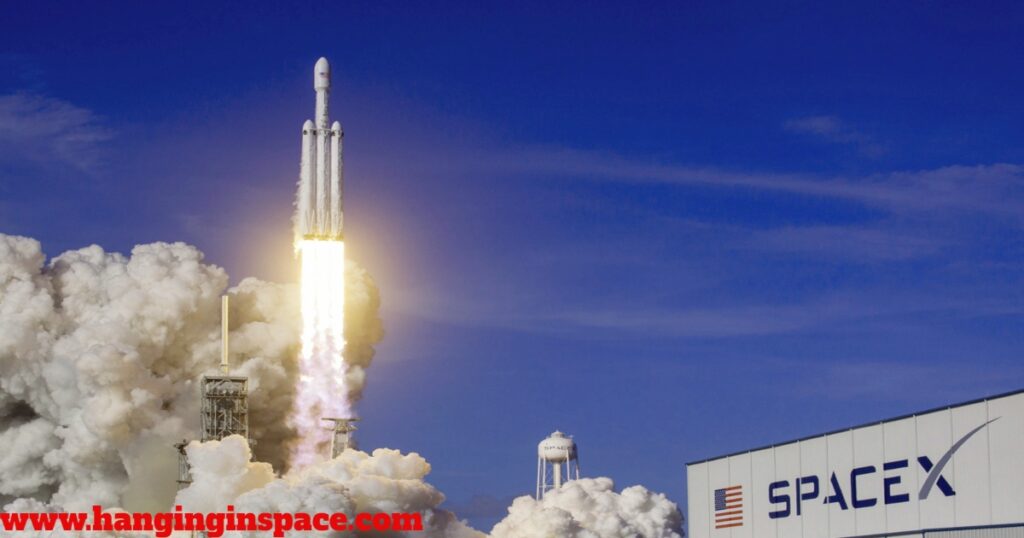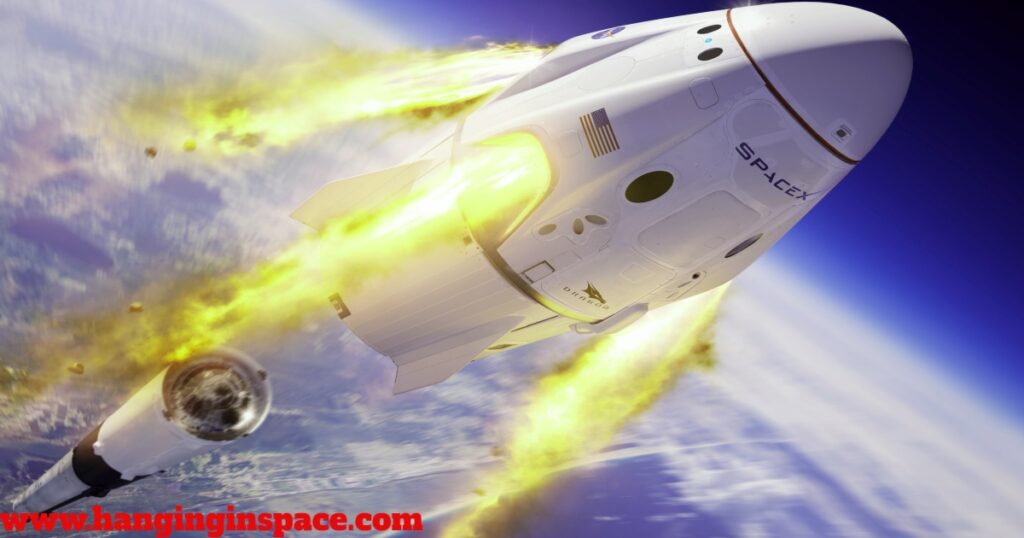SpaceX, formerly Space Exploration Technologies Corp., is leading the way in the space business and is transforming space travel and exploration. Since SpaceX’s founding in 2002 by businessman Elon Musk, SpaceX has become a prominent player in the movement to increase the affordability, accessibility, and sustainability of space travel.

SpaceX was founded by Elon Musk, a visionary entrepreneur known for his ambitious endeavors in technology, renewable energy, and space exploration.
Elon Musk wanted to lower the cost of space travel and develop human habitation on other worlds, especially Mars, which is why he founded SpaceX. Musk set out to establish a private aircraft corporation capable of changing the space sector.
What are the Goals of SpaceX?
SpaceX wants to enable human colonization of other planets, starting with Mars, to bring life to several worlds. To accomplish this, SpaceX has created a range of cutting-edge rocket technologies, spacecraft, and launch facilities that are intended to reduce the cost of space travel and promote environmentally friendly space exploration.

Reusable Rocket Technology:
SpaceX has pioneered the development of reusable rocket technology, designed to drastically reduce the cost of launching payloads into space. By recovering and refurbishing rocket stages, SpaceX aims to make space travel more affordable and accessible to both commercial and government customers.
Interplanetary Transportation:
SpaceX is actively working on the development of spacecraft capable of carrying humans to other planets, such as Mars. The company’s Starship spacecraft represents a key component of its interplanetary transportation architecture, with the ultimate goal of establishing a self-sustaining human colony on Mars.
Commercial Spaceflight:
SpaceX has played a pivotal role in the commercialization of spaceflight, launching satellites, cargo resupply missions to the International Space Station (ISS), and crewed missions for NASA and other space agencies. By offering reliable and cost-effective launch services, SpaceX has opened up new opportunities for commercial ventures in space.
Internet Satellites:
SpaceX aims to bring high-speed internet to underserved and isolated regions worldwide through SpaceX’s grand project, Starlink. The Starlink constellation consists of thousands of small satellites that circle the Earth to form a network that can deliver high-speed internet connectivity to even the most remote locations.
What are the Achievements of SpaceX?
Throughout its history, SpaceX has achieved numerous milestones and breakthroughs in space exploration and technology. Some of its most notable discoveries and achievements include:

Privately funded spacecraft to reach orbit:
In December 2008, SpaceX’s Falcon 1 became the first privately-developed liquid-fueled rocket to reach orbit, marking a significant milestone in commercial spaceflight.
Privately-funded spacecraft to dock with the ISS:
In May 2012, SpaceX’s Dragon spacecraft became the first commercial spacecraft to dock with the ISS, demonstrating the viability of private companies in space exploration.
Successful vertical landing of an orbital rocket:
In December 2015, SpaceX achieved a historic milestone by successfully landing the first stage of its Falcon 9 rocket vertically on solid ground. This achievement paved the way for reusable rocket technology and revolutionized the economics of spaceflight.
Crewed Spaceflight:
In May 2020, SpaceX made history with the launch of its Crew Dragon spacecraft, carrying NASA astronauts to the ISS in the first crewed mission launched from the U.S. since the end of the Space Shuttle program in 2011.
SpaceX’s Starlink Internet Satellite:
SpaceX’s grand project, Starlink, aims to bring high-speed internet to underserved and isolated regions worldwide. Thousands of tiny satellites make up the Starlink constellation, which orbits the Earth to create a network that can provide high-speed internet access to even the most remote places.
Starlink seeks to close the digital divide by overcoming the constraints of conventional internet infrastructure through the deployment of a constellation of low-Earth orbit satellites. In places where access to dependable broadband internet is limited or nonexistent, such as rural villages, remote areas, and developing nations, this project has the potential to completely transform internet connectivity.
As of today, the number of Starlink satellites in orbit is likely between 5,633 (on April 1st) and a number slightly higher due to the recent launch.
SpaceX’s Starshield:
Starshield supports national security initiatives by utilizing SpaceX’s launch capacity and Starlink technology. Starshield is intended for government usage, with an initial focus on three areas, whereas Starlink is intended for consumer and commercial use.
SpaceX’s Falcon 9 Rocket:
SpaceX created the reusable, two-stage Falcon 9 rocket to carry people and cargo into Earth orbit and beyond dependably and securely. The first reusable rocket in space is called Falcon 9. SpaceX can reduce the cost of space access by reflying the rocket’s most costly components thanks to reusability.
SpaceX’s Falcon Heavy:
Around eighteen 747 airplanes, or more than 5 million pounds of thrust, are produced upon liftoff by the 27 Merlin engines that collectively power the Falcon Heavy which is composed of three reusable Falcon 9 nine-engine cores. With a lift capacity of roughly 64 metric tons (141,000 lbs), Falcon Heavy is among the most powerful operational rockets in the world.
SpaceX’s Dragon Spacecraft:
Up to seven people can travel to and from Earth orbit and beyond in the Dragon spacecraft. It is the first private spaceship to carry passengers to the space station and the only one that is presently in operation that can return substantial amounts of goods to Earth.
SpaceX’s Starship Spacecraft:
The Starship spacecraft is at the forefront of SpaceX’s plans for interplanetary exploration. Starship, a multifunctional, totally reusable spacecraft that can transport people and goods anywhere in the solar system, is a paradigm leap in space transportation technology.
By enabling missions to the Moon, Mars, and beyond, Starship’s elegant design, sturdy stainless steel structure, and potent engines promise to transform human space travel. With its capacity to refuel in orbit and cover great distances with unmatched speed, Starship has the potential to realize Elon Musk’s dream of a self-sufficient human society on Mars.
The Starship spaceship and Super Heavy rocket, developed by SpaceX, are a fully reusable transportation system that can transport people and goods to Mars, the Moon, and Earth orbit. With a maximum payload capacity of 250 metric tonnes disposable and 150 metric tonnes entirely reusable, Starship is the most powerful launch vehicle ever created. We will see a huge amount of the SpaceX Starship Rocket Launch in the future.
There have been 3 Starship flights launched in total as of today, April 6, 2024. These flights were prototype test launches and not missions carrying cargo or people. It’s important to note that Starship is still under development and hasn’t achieved its full launch capabilities yet.
Conclusion:
SpaceX has become a pathfinder in the realm of space exploration, pushing the envelope in terms of creativity and technology to fulfill the ideal of humanity becoming a multi-planetary species. SpaceX continues to inspire future generations of scientists, engineers, and explorers worldwide with its audacious objectives, ground-breaking accomplishments, and steadfast dedication to expanding the frontiers of space.
